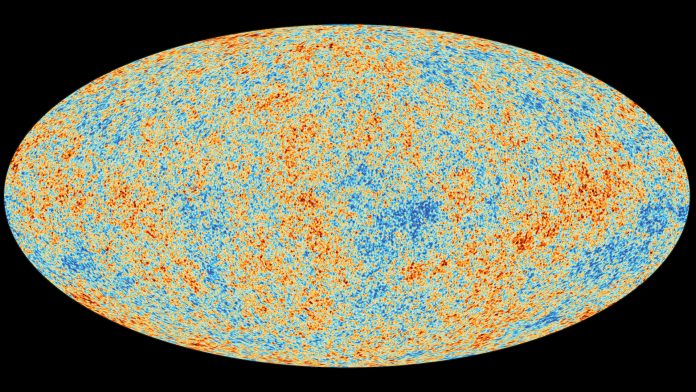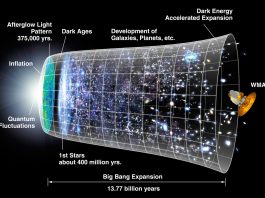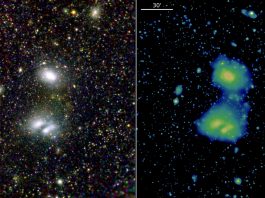Mairi Sakellariadou, Professor of Theoretical Physics at King’s College London, discusses her research into early Universe cosmology.
Professor Mairi Sakellariadou’s research into theoretical physics and early Universe cosmology places an emphasis on the physics of the early Universe with her research activities including quantum gravity (string cosmology, loop quantum cosmology, group field theory, noncommutative geometry), gravitational physics (gravitational waves, modified gravity), and beyond the Standard Model particle physics (cosmic defects, axions). The Innovation Platform spoke to Sakellariadou about her work in some of these areas.
Can you provide a brief outline of the field in which you work, as well as your own interests?
Cosmology is a multidisciplinary discipline of research that combines theoretical physics, gravitational physics, astrophysics, and particle physics, as well as mathematics. To make progress, it requires the combination of theoretical developments and observational or experimental tests.
My research is at the crossroads between theoretical models and observational data, testing fundamental theories against the plethora of precise data we have from either astrophysics or particle physics. Early universe cosmology is my field of expertise and I have been studying, and proposing, cosmological scenario based on different approaches to quantum gravity (string theory, noncommutative geometry, loop quantum gravity, group field theory) in an attempt to build a cosmological model based upon a concrete theory instead of adopting an ad hoc approach, and also to test a fundamental theory or contribute to model building.
In recent years I have profited from several international collaborations. I am a member of:
- The LIGO Scientific Collaboration
- The LISA Consortium
- The Einstein Telescope
- The MoEDAL collaboration at LHC-CERN, searching for highly ionising particles such as magnetic monopoles, dyons and (multiply) electrically charged stable massive particles predicted in a number of theoretical scenarios
- The Euclid Consortium, a space mission to map the dark universe
- The SKA – the largest radio telescope set to explore the Universe
As a theoretical cosmologist, for a long time I have been working with theoretical models, motivated by elements of fundamental theory, to describe the early stages of our Universe and the laws that govern its evolution. Despite the fact that such proposals are inspired by a fundamental theory and have been checked for their mathematical consistency, I was aware that they could simply be mathematical constructions with no connection to the real world and the Universe we inhabit. As such, I believed it necessary to compare the predictions of any, otherwise successful, models with real observational data.
The Cosmic Microwave Background (CMB), first detected by the COBE satellite in the 1990s, provided the first concrete cosmological test that any theoretical model has to pass in order to provide a viable physical scenario. The discovery of the Higgs boson in 2012 by the ATLAS and CMS collaborations, based on collisions in the LHC at CERN, supports the use of scalar fields in early Universe cosmology. More recently, the first direct detection of gravitational waves, produced by a pair of merging black holes, by the twin LIGO interferometers in 2016, 100 years after the theoretical prediction based on Einstein’s theory of General Relativity, opened gravitational physics as a novel discipline. Subsequently, the LIGO/Virgo Collaboration detected many more mergers of compact objects, either black holes or neutron stars. These detections provide us with a powerful tool to test fundamental theories (for instance, extensions of General Relativity), particle physics models beyond the Standard Model, astrophysical models of compact objects, cosmological models of the very early (inflation) and late (large-scale structure) universe, dark matter candidates (primordial black holes and axions), and even quantum gravity theories. A new window on multi-messenger astronomy is born.
What examples would you use to highlight the use of data in order to test the validity of cosmological models based on fundamental theories and hence provide some feedback for the fundamental theories themselves?
The Standard Model of particle physics is the most successful particle physics model we currently have. However, this model is not complete, hence one may propose physics beyond the Standard Model. Such proposals may predict the existence of topological defects formed after a phase transition followed by a spontaneously broken symmetry. Among these exotic objects, cosmic strings can play an important cosmological role and leave behind a distinguishable signature. In particular, within the LIGO/Virgo/KAGRA Collaboration (LVKC) and the LISA consortium, we are searching for such signatures which will allow us to constrain particle physics models and consequently some cosmological scenarios. Similarly, several extensions of the Standard Model predict first order phase transitions, which also naturally lead to the production of gravitational waves detectable by either LVKC or LISA, depending on the nature of the spontaneously broken symmetry.
The nature of dark matter remains an open question in cosmology. Several candidates have been proposed and several experiments are still searching for the successful candidate. Amongst the most promising candidates, since supersymmetry has not been found and hence the lightest supersymmetric particle is no longer the most plausible candidate, are primordial black holes and axions. In both cases, one may expect distinct features in the observational data, and several ongoing studies are looking for a signature in the gravitational wave detections.
The star formation history and the mass distribution of black holes is yet another open question in astrophysics, while the equations of state of neutron stars still remains to some extent unconstrained. The binary black hole mergers and the discovery of gravitational waves accompanied by an electromagnetic counterpart provide a powerful tool to better understand the physics of compact objects.
Finally, the dream of all theoretical physicists remains the discovery of a theory of quantum gravity; this is a theory that will harmoniously combine Einstein’s theory of General Relativity with quantum mechanics. Several theories have been proposed this far, and a distinct cosmological model has stemmed from each. The formation and propagation of gravitational waves is expected to be different from the one in classical General Relativity, and we have already performed several studies that provide the starting point for testing their validity.
What have been your most notable achievements/discoveries?
Some of my most important contributions have been:
- The genericity of cosmic strings formation within Grand Unified Theories, the analytical model based on our numerical simulations that describes their evolution and their imprints in the Cosmic Microwave Background, as well as in the gravitational wave spectrum
- The cosmological model based on group field theory that can avoid the initial singularity and provide an early accelerated era in the absence of an ad hoc scalar field
- The role of primordial black holes and axions as dark matter candidates and their fingerprint on the gravitational wave spectrum
- A novel cosmological model based on noncommutative geometry
- An explanation of the space-time dimensionality based on brane interactions within the framework of a cosmological model with extra dimensions
- A cosmological model based on string theory which can provide the same dynamics as the rather ad hoc ΛCDM model
At present, we are in the extraordinary position of being able to test the predictions of our models against data, transforming early Universe cosmology to a physical theory. As time goes by and as we reach further into space, the early Universe, we will be able to make even more remarkable progress in cosmology, unravelling the mysteries of the Universe.
Mairi Sakellariadou
Professor of Theoretical Physics
Kings College London
+44 (0)20 7848 1535
mairi.sakellariadou@kcl.ac.uk
Tweet @KingsCollegeLon
www.kcl.ac.uk/people/mairi-sakellariadou
Please note, this article will also appear in the third edition of our new quarterly publication.









